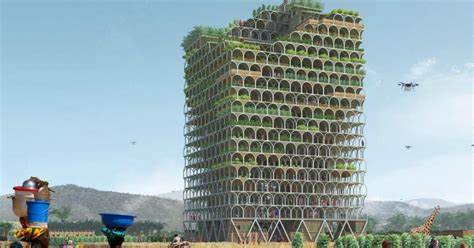
Vertical Farming: Revolutionizing Agriculture for Sustainable Food Systems
Introduction
Vertical Farming is an innovative agricultural practice with the potential to transform food production. With the global population increasing and concerns about food security rising, this sustainable farming method offers a promising solution. This article explores the history, benefits, integration with food sovereignty movements, case studies, current trends, challenges, controversies, and future outlook of vertical farming and its relationship with food sovereignty.
Historical Background
Vertical farming originated in the early 20th century with the concept of growing crops in vertically stacked layers. However, it was not until the 21st century that technological advancements allowed for the development of more efficient and scalable vertical farming systems. Concurrently, the philosophy of food sovereignty emerged as a response to the negative impacts of industrialized agriculture, emphasizing local control and ownership of food systems.
Key Concepts and Definitions
Vertical farming refers to the practice of cultivating plants in vertically stacked layers or inclined surfaces such as walls or containers. This method utilizes controlled environment agriculture techniques, including hydroponics or aeroponics, to provide plants with optimal growth conditions. Food sovereignty, on the other hand, is defined as the right of individuals and communities to control and manage their own food systems, including production, distribution, and consumption. Vertical farming and food sovereignty are interconnected as the former can contribute to the latter by promoting local food production and reducing dependence on globalized food systems.
Main Discussion Points
Benefits of Vertical Farming
Vertical farming offers numerous benefits, including increased food production and efficiency. By utilizing vertical space, it maximizes land use and reduces the need for extensive agricultural areas. Additionally, vertical farming consumes significantly less water compared to traditional farming methods. Moreover, the controlled environment allows for year-round production, ensuring a stable food supply regardless of climate conditions.
Principles and Goals of Food Sovereignty
The philosophy of food sovereignty aims to empower local communities by providing them with control and ownership over their food systems. This includes promoting sustainable and organic farming practices that prioritize environmental conservation and community well-being. Furthermore, food sovereignty seeks to ensure access to nutritious and culturally appropriate food for all individuals.
Integration of Vertical Farming into Food Sovereignty Movements
Vertical farming can play a crucial role in achieving the goals of food sovereignty. By enabling local food production and self-sufficiency, it reduces reliance on globalized food systems and empowers communities to take control of their food sources. Moreover, vertical farming can mitigate the negative impacts of global trade agreements and provide an alternative to multinational corporate-dominated agricultural practices.
Case Studies or Examples
Example: Vertical Farming initiatives in urban areas have gained traction as a means of addressing food insecurity and promoting sustainable agriculture. Projects such as “The Plant” in Chicago and “Sky Greens” in Singapore have successfully utilized vertical farming to produce fresh produce in densely populated cities, reducing carbon emissions associated with long-distance transportation and ensuring access to locally grown food.
Example: Indigenous communities around the world have been practicing food sovereignty through traditional farming methods for centuries. By preserving their cultural practices and maintaining biodiverse farming systems, these communities have demonstrated the importance of sustainable agriculture and local food production.
Current Trends or Developments
Technological advancements in vertical farming, including the use of artificial intelligence and automation, are revolutionizing the industry. These advancements allow for improved efficiency and scalability of vertical farming systems, making them more economically viable. Furthermore, there is increasing global recognition and support for food sovereignty movements, with governments and international organizations recognizing the importance of empowering local communities in food production.
Challenges or Controversies
Vertical farming faces criticisms, including its high energy requirements. The controlled environment and artificial lighting necessary for vertical farming can lead to increased energy consumption. Additionally, limited crop diversity is a concern, as vertical farming is currently more suited for the cultivation of leafy greens and herbs. Moreover, cost barriers pose a challenge for small-scale farmers, as the initial investment in vertical farming infrastructure can be substantial.
Controversies surrounding food sovereignty arise from conflicts with global trade agreements, which prioritize profit-driven agricultural practices over local control. Resistance from multinational corporations, who may perceive food sovereignty as a threat to their dominance in the agriculture industry, further complicates the implementation of food sovereignty principles.
Future Outlook
There is significant potential for scaling up vertical farming for widespread adoption. As technology continues to advance and costs decrease, vertical farming can become a viable solution for sustainable food production on a larger scale. Similarly, food sovereignty movements are expected to continue growing, driven by the increasing recognition of the importance of local control and sustainability in food systems.
Conclusion
Vertical farming has the potential to revolutionize agriculture by increasing food production, reducing resource consumption, and providing year-round climate-resilient crops. When integrated with the philosophy of food sovereignty, it can empower communities, promote sustainable practices, and ensure access to nutritious food. While challenges and controversies exist, the future outlook for vertical farming and food sovereignty is promising, with the potential to transform our global food systems.